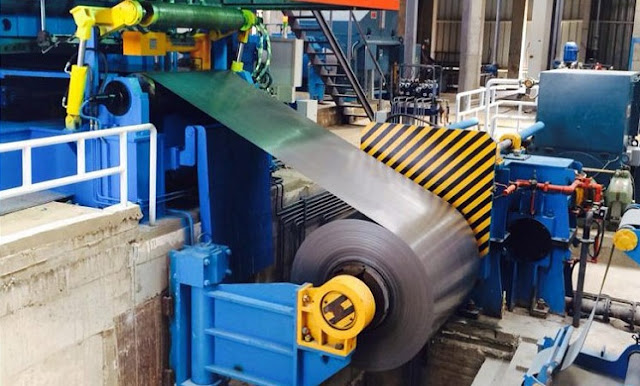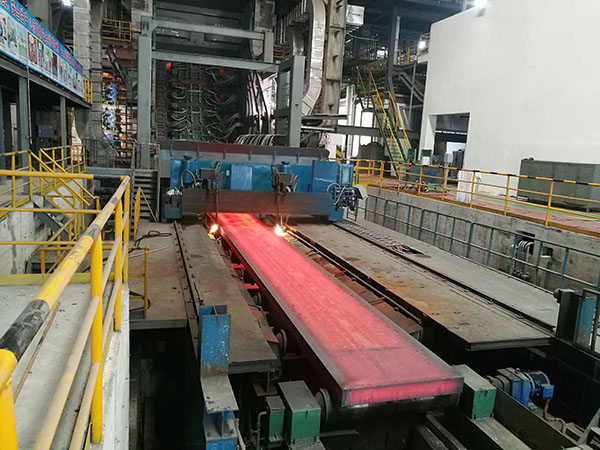Hot Rolling VS Cold Rolling
Both hot rolling and cold rolling are the forming processes of section steel or steel plate. They have a great influence on the structure and properties of steel. The rolling of steel is mainly hot rolling, and cold rolling is only used to produce small section steel and thin plate.
Hot Rolling
Advantages:
It can destroy the casting structure of ingot, refine the grain size of steel and eliminate the defects of microstructure so that the structure of steel is compact and the mechanical properties are improved. This improvement is mainly reflected in the rolling direction so that the steel is not isotropic to a certain extent. The bubbles, cracks, and porosity formed during pouring can also be welded under the action of high temperature and pressure.
Disadvantages:
1. After hot rolling, non-metallic inclusions (mainly sulfides and oxides, as well as silicates) in steel are pressed into thin sheets, resulting in stratification (interlayer). Layering deteriorates the tensile properties of steel along the thickness direction, and interlaminar tearing may occur when the weld shrinks. Local strain induced by weld shrinkage often reaches several times of yield point strain, which is much larger than that caused by the load.
2. Residual stress caused by uneven cooling. Residual stress is the internal self-balanced stress without external force. Hot rolled section steel of various sections has such residual stress. The larger the section size of general section steel, the larger the residual stress. Although the residual stress is self-balanced, it has some influence on the performance of steel members under external forces. For example, it may have adverse effects on deformation, stability, and fatigue resistance.

Cold Rolling
Cold rolling refers to the process of cold drawing, cold bending, and cold drawing of steel sheets or strips into various types of steel at room temperature.
Advantage:
With fast forming speed, high yield, and no damage to the coating, it can be made into various cross-section forms to meet the needs of service conditions. Cold rolling can make steel produce large plastic deformation, thus improving the yield point of steel.
Disadvantage:
1. Although there is no hot plastic compression in the forming process, there are still residual stresses in the section, which will inevitably affect the overall and local buckling characteristics of steel;
2. Cold-rolled section steel generally has an open section, which makes the free torsional stiffness of the section lower. Torsion is easy to occur in bending, flexural-torsional buckling is easy to occur in compression, and torsional resistance is poor;
3. Cold-rolled formed steel has a smaller wall thickness and no thickening at the corner of the plate connection, so it has a weak ability to withstand local concentrated loads.
The main differences between hot rolling and cold rolling as following:
Local buckling of the cold-rolled section is allowed to take full advantage of the post-buckling bearing capacity of members, while local buckling of the hot-rolled section is not allowed.
The causes of residual stresses in hot rolled and cold rolled sections are different, so the distribution of residual stresses in sections is also very different. The distribution of residual stress on the section of cold-formed thin-walled steel is bending, while that on the section of hot-bonded steel or welded steel is a thin film.
The free torsional stiffness of hot-rolled section steel is higher than that of cold-rolled section steel, so the torsional resistance of hot-rolled section steel is better than that of cold-rolled section steel.
Free send inquiry to stella@hanrm.com if any needs.
Whatsapp/Wechat:+8615877652925
Website: https://www.hanrm.com

More News You May Interesting:
Hot Rolling
The Advantages and Disadvantages of Hot Rolling
The Difference Between Hot Rolled Steel and Cold Rolled Steel
New Process Sendzimir Roll Features
Sendzimir Mill Roll Maintenance
Finishing Rolling Mill Process Explanation
Reasons and Solutions for the Piling of Wire Rod Rolling
Morgan Wire Rod Mill
Why does the Steel Bar Bend after being Cut by Flying Shear?
Headless Welding Rolling Process
Bar Rolling Mills Water Cooling Technology
How to Improve the Thermal Efficiency of the Reheating Furnaces?
Causes of Surface Cracks in High-Speed Wire Rod Rolling Mill
What is Slit Rolling?
Failure Analysis of Cold Mill Roll
Bar Automatic Counting System
Rolling Mill Pass Design





















